History of Imperial China
Imperial China (Qin dynasty, 221 BC – Qing dynasty 1911)
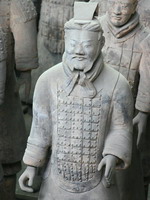 In year 221BC, Shi Huang Di, the Qin State united disintegrated China ruler his power and became the first emperor of whole China. That moment marked the beginning of the second period of the Chinese history – the imperial one.
In year 221BC, Shi Huang Di, the Qin State united disintegrated China ruler his power and became the first emperor of whole China. That moment marked the beginning of the second period of the Chinese history – the imperial one.
The Qin dynasty existed almost 10 years, however, despite this short period, Shi Huang Di managed to do what nobody could do before him – to unite China, developing it into a powerful state. Under the Qin dynasty, the construction of the Great Wall of China was finished, a single system of the army management was established, a great number of economic reforms was introduced. However upon the emperor’s death in year 210 BC, China entered an age of internecine war again.
In 202 BC, Liu Bang, Chu State’s commander seized the power in China and founded a new dynasty of Chinese emperors – Han, which existed until the III century BC. One of the most outstanding emperors from this dynasty was Wu of Han (Han Wudi) during whose reign Confucianism became a ruling ideology in China. The Han Empire existed up to 220, until it was overthrown as a result of a rebellion by commanders. For several centuries China sank into epoch of rebellions and individual empires.
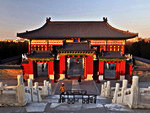 |
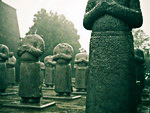 |
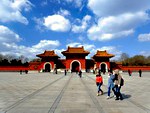 |
However in 581, the founder of the Sui State seized power and united China again. It was the reign of this dynasty, when the construction of the well-known Grand Canal, considered nowadays one of the new wonders of the world, was started. In addition, this dynasty contributed much to the establishment of the management system able to ensure the integrity of China. However, the Sui dynasty sank into decay very soon due to numerous devastative military campaigns. It was replaced by the Tang Dynasty.
The Tan dynasty was ruling in China from 618 to 907, which went down in the Chinese history as the epoch of highest peak of medieval China. Gaozu, the dynasty founder pursued humane policy, aimed to the development of art and culture. This was the epoch of emperors-poets who patronized artists, poets and thinkers. However, the Tang dynasty also decayed by the beginning of the IX century. Since that, a period of internecine wars and race for power began. In 906 the death of the last emperor from the Tan dynasty, started the epoch of “Five Dynasties”, when the rulers were replacing one after another. This was also a period of invention of a printing machine and introduction of first paper money.
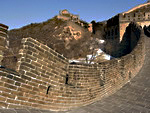 |
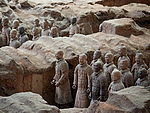 |
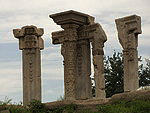 |
In 960 a new dynasty of Song with its founder Chao-Kuan-yin, who managed to unite the major part of China under his control, came into existence. At this very period China had a new enemy in the country’s north-eastern part – the Khitan Mongolian tribes, whom China had to concede a part of its territories in 1075. However, in spite of this, the period of Sung was considered in the Chinese history as the epoch of the country’s economic and cultural heyday.
The XIII century was marked with the Mongol invasion, which began all over the world. As close neighbors of the Mongols, the Chinese were the first to be captured. In 1279, the grandson of Genghis Khan, Kublai Khan, laid hold on China and became the founder of a new Mongolian dynasty of Chinese emperors - Yuan. The capital of the state was chosen Khanbalik (Beijing), but the Mongols did not rule for long, and after the death of Kublai Khan, the power passed into the hands of the Ming Dynasty.
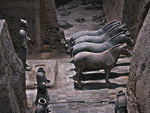 |
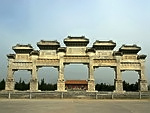 |
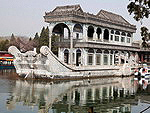 |
The Ming Dynasty ruled China until 1644. It was the period when construction and agriculture were developed, marine expeditions were sent to the Persian Gulf and the coast of Africa. This period also coincided with the active sea voyages of the Europeans, causing Christian missionaries to arrive to China, and in year 1557 China let the modern port area of Macau to Portugal.
The last dynasty of Chinese emperors - Qing was founded by Manchu invaders. This period is considered to be the era of peace and prosperity in China, and it was the Manchus who pursued a policy of country’s isolation over 300 years. The Qing Dynasty was ruling up to the beginning of the XX century, until China became a democratic republic as a result of mass uprisings and the Xinhai Revolution of 1911.

